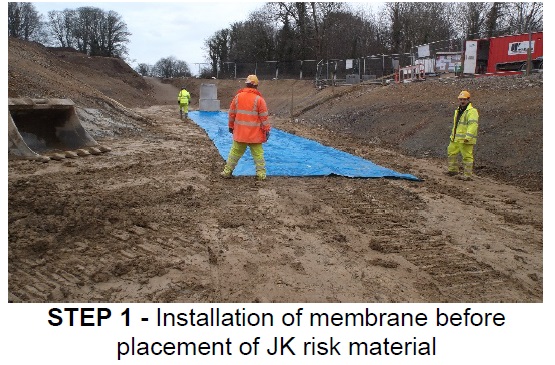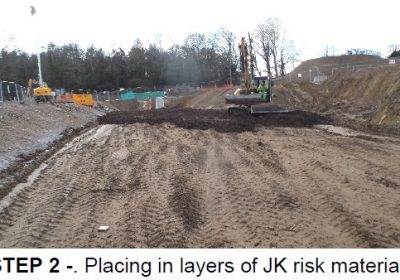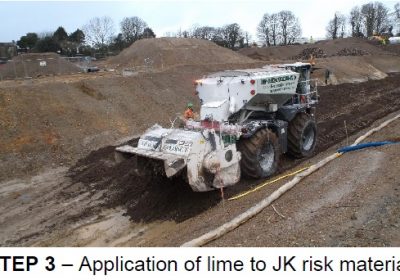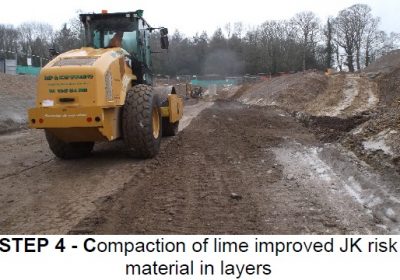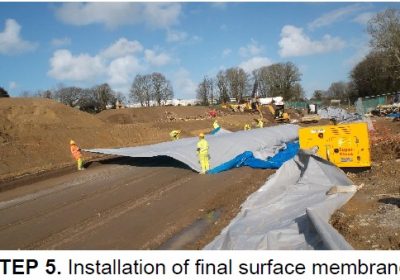Japanese Knotweed was known to be an issue in the field where the south car park is being constructed for a number of years prior to the commencement of the project. Chemical treatment of the knotweed was intermittently undertaken over several years with a treatment bund created in the north east corner of the site and knotweed contaminated material moved to this area for ongoing treatment.
Inspections of the site in the year before we commenced works as well as on the commencement of our works documented knotweed growth beyond the extents of this treatment bund. Later discussions with local farmers revealed that mowing of the field in recent years had been undertaken without any precautions in place to prevent the spread of knotweed.
As a result, when removing the topsoil and subsoil from this area under ecological watching brief, large quantities had to be segregated and classified as having a moderate to high risk of containing Japanese knotweed rhizome. This material was therefore unsuitable for standard offsite disposal and material had to be treated as hazardous waste for disposal purposes. The closest waste facility that could accept these materials was based in Cullompton which is around 120 miles from the site.
In accordance with best practice, we sought to bury the knotweed material on site where possible. This involved creating burial cells in the landscaped areas of the site such as beneath the attenuation pond and beneath a narrow strip of landscaping but it would not be sufficient to deal with the quantities present. The excess quantity on site which could not be accommodated in burial cells or bunds was approximately 2000m3.
The site also had a history of mine workings including a deep adit crossing the new south car park. Due to the condition the adit was found to be in, we had to excavate down to the base (6m below ground level) and install a drainage pipe through the adit to maintain a pathway for water. This involved excavation of several thousand cubes of materials and reinstatement once complete.
While the 2000m3 of knotweed risk material did not meet the requirements of a structural fill, it was discovered that by using a process of lime improvement, the material could in fact be classified as Class 2 fill material and would be suitable for placing beneath the car park.
This meant that the knotweed risk material could be used to backfill the adit excavation. To allow this we had to ensure 2m of cover to the material was achieved and specialist membrane barrier installed to prevent spread into waterways or back to the surface.
The material had to be laid in several layers, with lime applied to each layer before compaction of the layer could be undertaken. Testing was undertaken on each layer to ensuring the required performance was being achieved.
The clean as-dug material from the adit excavation could then be disposed of locally within a 10 miles radius, utilising local farmers who had a need for the material.
The initiative avoided the need to spread 2000m3 of knotweed rhizome risk soils to another site and avoided approx. 220 round trips to a waste facility in Collumpton for 8-wheeler tipper trucks.
Did you find this article helpful?
Please rate this article

Loading...

